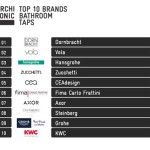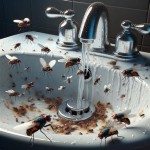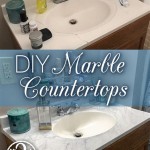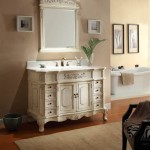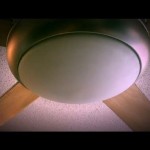Replacement Bathroom Medicine Cabinet Mirrors: A Comprehensive Guide
Bathroom medicine cabinets are a staple in many homes, providing convenient storage for toiletries and medications. A key component of these cabinets is the mirror, which offers functionality for daily routines such as shaving, applying makeup, and personal grooming. Over time, however, medicine cabinet mirrors can become damaged due to scratches, cracks, chips, or simply the deterioration of the reflective coating. When this occurs, replacing the medicine cabinet mirror presents a viable solution for restoring both the functionality and aesthetic appeal of the bathroom.
This article delves into the various aspects of replacing bathroom medicine cabinet mirrors, providing a comprehensive guide for homeowners and professionals alike. The information presented will cover the types of replacement mirrors available, the tools and materials needed for the installation process, safety precautions to take, and step-by-step instructions for removing the old mirror and installing the new one. Additionally, considerations for selecting the appropriate replacement mirror and troubleshooting common issues will be addressed.
Assessing the Need for a Replacement Medicine Cabinet Mirror
Before embarking on a replacement project, it is essential to accurately assess the condition of the existing mirror and determine if replacement is indeed necessary. Several factors can indicate the need for a new mirror. Obvious signs include physical damage such as cracks, chips, or deep scratches that impair visibility. Even hairline cracks can propagate over time, eventually leading to a complete mirror failure.
Another indication of deterioration is the silvering on the back of the mirror degrading. This manifests as dark spots or areas where the reflective coating has peeled away, resulting in a mottled or distorted reflection. These spots, often starting at the edges, can gradually expand, significantly diminishing the mirror's usability and aesthetic value. Even if the damage is minor, it is important to consider the overall appearance of the bathroom. A damaged mirror can detract from the room's ambiance, making a replacement worthwhile solely for aesthetic reasons.
Finally, consider the type of medicine cabinet itself. If the cabinet is old or of poor quality, and the mirror is embedded in the door in such a way that mirror replacement is difficult or impossible without damaging the door, it might be more prudent to replace the entire medicine cabinet. Weigh the cost and labor involved in replacing just the mirror versus replacing the entire unit.
Selecting the Right Replacement Mirror
Choosing the correct replacement mirror is crucial for ensuring a successful and satisfactory outcome. Several factors should be considered during the selection process, including the size, shape, thickness, and type of glass. Accurately measuring the dimensions of the existing mirror is paramount. Use a measuring tape to determine the length and width, and record these measurements carefully. It is often wise to double-check these measurements to avoid errors.
The shape of the replacement mirror must also match the original. Medicine cabinet mirrors commonly come in rectangular, square, or oval shapes. Ensure that the replacement mirror matches the exact shape of the old one for a seamless fit. The thickness of the glass is another important consideration. Using glass that is either too thick or too thin can affect the fit and stability of the mirror within the medicine cabinet door. Typically, medicine cabinet mirrors range in thickness from 1/8 inch to 1/4 inch. Match the thickness of the original mirror as closely as possible.
Various types of glass are available for replacement mirrors. Standard float glass mirrors are a common and cost-effective option. However, for bathrooms, consider using tempered glass, which is more resistant to breakage and shatters into small, relatively harmless pieces if it does break. This is a particularly important consideration for households with children or pets. Low-iron glass offers a clearer and more vibrant reflection compared to standard float glass, but it is typically more expensive. Finally, consider whether you need a mirror with safety backing. This backing helps to contain the shards of glass if the mirror breaks, further enhancing safety.
In addition to the type of glass, consider the finish. Some mirrors come with a beveled edge, which adds a decorative touch. Others have a plain, polished edge. Choose a finish that complements the style of the bathroom and the medicine cabinet itself.
Step-by-Step Guide to Replacing the Medicine Cabinet Mirror
Replacing a bathroom medicine cabinet mirror is a task that can be accomplished by most homeowners with basic tools and skills. The following step-by-step guide provides detailed instructions for safely removing the old mirror and installing the new one.
Step 1: Gather the Necessary Tools and Materials. Before starting the project, assemble all the necessary tools and materials. This includes: * New replacement mirror (with the correct dimensions, shape, thickness, and glass type). * Safety glasses and gloves for personal protection. * Putty knife or scraper. * Heat gun or hair dryer (optional, for softening adhesive). * Cleaning supplies (glass cleaner, microfiber cloth). * Measuring tape. * Silicone adhesive or mirror mastic. * Caulk gun (for applying adhesive). * Painter's tape.
Step 2: Prepare the Work Area and Ensure Safety. Clear the area around the medicine cabinet to provide ample workspace. Lay down a drop cloth or old towel to protect the countertop and floor from debris. Put on safety glasses and gloves to protect your eyes and hands from glass shards and chemicals.
Step 3: Remove the Old Mirror. This is often the most challenging part of the process. The old mirror is typically held in place with adhesive, clips, or both. If the mirror is held in place with clips, carefully remove them using a screwdriver or pliers. If the mirror is glued, use a putty knife or scraper to gently pry the mirror away from the cabinet door. Work slowly and patiently to avoid damaging the door. If the adhesive is particularly stubborn, use a heat gun or hair dryer to gently warm the adhesive and soften it. Be careful not to overheat the mirror or the cabinet door.
Once the majority of the adhesive is loosened, carefully remove the mirror from the door. If there are any remaining adhesive residues, use the putty knife or scraper to remove them. Be careful not to scratch the surface of the cabinet door. Clean the area thoroughly with a suitable solvent to remove any remaining adhesive residue, ensuring a clean surface for the new mirror.
Step 4: Prepare the New Mirror and Apply Adhesive. Clean the back of the new mirror with glass cleaner and a microfiber cloth to remove any dust or fingerprints. Apply a continuous bead of silicone adhesive or mirror mastic to the back of the mirror, spacing the beads a few inches apart. Do not apply adhesive to the very edges of the mirror, as this can cause the adhesive to squeeze out when the mirror is pressed into place.
Step 5: Install the New Mirror. Carefully align the new mirror with the opening in the cabinet door. Press the mirror firmly into place, ensuring that it is evenly seated. Use painter's tape to secure the mirror to the door while the adhesive cures. This will prevent the mirror from shifting or sliding during the curing process. Follow the manufacturer's instructions for the adhesive's curing time, which is typically 24 to 48 hours.
Step 6: Clean Up and Inspect. Once the adhesive has fully cured, remove the painter's tape. Carefully clean the surface of the new mirror with glass cleaner and a microfiber cloth. Inspect the installation to ensure that the mirror is securely attached and that there are no gaps or imperfections. If necessary, apply a bead of caulk around the edges of the mirror to seal any gaps and provide a finished look. Dispose of the old mirror properly, taking care to wrap it securely in cardboard or newspaper to prevent injury.
Troubleshooting Common Issues
While replacing a medicine cabinet mirror is generally a straightforward process, some common issues can arise. Addressing these issues promptly can prevent frustration and ensure a successful outcome.
Problem: Difficulty Removing Old Mirror. If the old mirror is proving difficult to remove, avoid using excessive force, which could damage the cabinet door. Instead, try using a heat gun or hair dryer to soften the adhesive. Apply heat gradually and evenly, testing the mirror periodically to see if it is loosening. You might also try using a thin wire, such as piano wire or fishing line, to carefully cut through the adhesive behind the mirror. Work slowly and patiently to avoid damaging the cabinet door.
Problem: Adhesive Squeezing Out. If the adhesive squeezes out around the edges of the new mirror, wipe it away immediately with a damp cloth. Use a small amount of mineral spirits or rubbing alcohol to remove any stubborn residue. Avoid using harsh chemicals, which could damage the mirror or the cabinet door.
Problem: Mirror Not Seating Properly. If the new mirror is not seating properly within the opening in the cabinet door, double-check the dimensions of the mirror to ensure that it is the correct size. If the mirror is slightly too large, you may need to carefully trim it using a glass cutter. If the mirror is too small, you may need to add shims or spacers to fill the gaps. Applying too much adhesive can also prevent the mirror from seating properly. Remove the mirror, clean the adhesive, and reapply with less adhesive.
Problem: Mirror Cracking During Installation. Glass can crack if excessive force is applied. If a mirror cracks during installation, immediately stop and remove the broken pieces carefully to prevent injury. Re-evaluate the installation process. Were the measurements precise? Was there something impeding the mirror seating properly? Ensure the replacement mirror fits perfectly before attempting to set the mirror in place again. Purchase another replacement mirror and begin the process again, taking extra care to apply even pressure and avoiding any unnecessary force.

Mirrors Medicine Cabinets Recessed Lighted More Kohler

Glacier Bay 16 In W X 20 H 4 D Recessed Frameless Mirrored Medicine Cabinet Glass Mp109hd The Home Depot

Why Designers Most Medicine Cabinets Some Genius Alternative Bathroom Storage Solutions Emily Henderson

Deco Mirror 16 In W X 30 H 4 1 2 D Frameless Recessed V Groove Beveled Eclipse Bathroom Medicine Cabinet 8209 The Home Depot

Forclover Kf Medicine Cabinet 48 In X 36 Surface Recessed Mount Satin Mirrored Soft Close The Cabinets Department At Com

Bathroom Medicine Cabinet Mirror Replacement Doityourself Com Community Forums

Tri View Medicine Cabinet Bertch Cabinets

Medicine Cabinets Surface Mount In Wall Framed More Kohler

Mirror Medicine Cabinet Amazing Ideas For Your Bathroom

Bathroom Mirror Cabinets Bath Mirrors Medicine Pottery Barn
Related Posts
